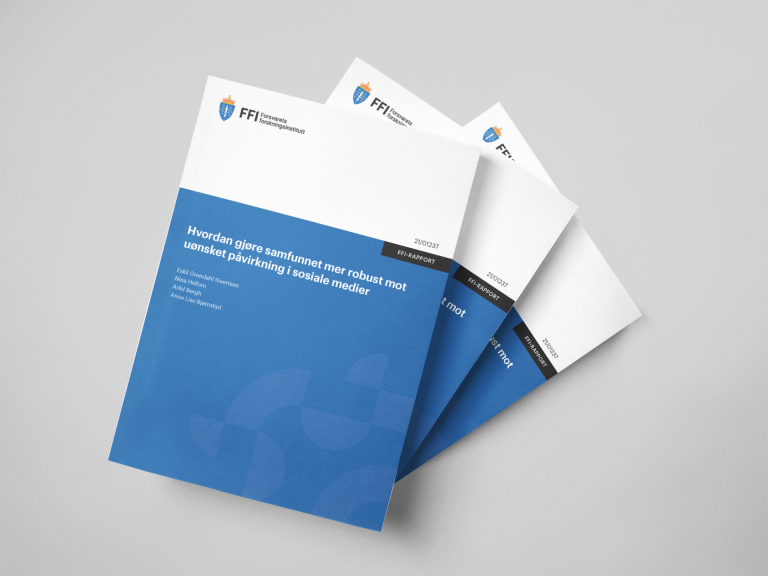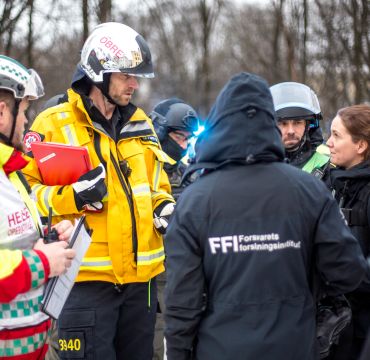Hvordan gjør vi samfunnet mer robust mot påvirkningsoperasjoner?
Vi er inne i et valgår, og ifølge de ugraderte trusselvurderingene fra Etterretningstjenesten og Politiets sikkerhetstjeneste bør vi være forberedt på at utenlandsk etterretning kan forsøke å påvirke den offentlige debatten i Norge.

Hvordan kan dette fanges opp, forebygges og håndteres? Det forsøker FFI å svare på i en ny rapport (se under).
Rapporten er skrevet på oppdrag fra Justis- og beredskapsdepartementet og belyser spørsmålene:
- Hvordan kan norske borgere påvirkes av desinformasjon og påvirkningsforsøk i sosiale medier?
- Hvilke konkrete metoder og plattformer benyttes i påvirkningsoperasjoner/forsøk?
- Hvilke typer aktører forsøker å påvirke Norge?
- Hvilke tiltak bør vurderes for å gjøre samfunnet mer robust mot uønsket påvirkning i sosiale medier?
Forstå og gjenkjenne en påvirkningsoperasjon
– Påvirkningsoperasjoner pågår gjerne fordekt og med lav intensitet over tid. De kan ramme samfunnets sårbarheter på tvers av sektorer og under terskelen for hva noen vil gjenkjenne som en krise. Derfor er det nødvendig å gjøre hele samfunnet mer robust i møtet med påvirkningsforsøk, sier fagdirektør Eskil Grendahl Sivertsen.
Covid-pandemien har synliggjort utfordringen med spredning av desinformasjon som har hatt konsekvenser for liv og helse i flere land. Og ifølge Oxford Internet Institute, ble 81 land utsatt for påvirkning i form av politisk propaganda og desinformasjon i 2020 (Norge var ikke med i studien).
Med denne rapporten ønsker FFI å gjøre norske myndigheter, Forsvaret og totalforsvarsaktørene – og dermed samfunnet – bedre rustet til å forstå og gjenkjenne desinformasjon og påvirkningsoperasjoner i sosiale medier. Det er nødvendig for å kunne identifisere og beskytte egne sårbarheter gjennom konkrete tiltak og prioriteringer.

I rapporten beskriver FFI hva desinformasjon og påvirkningsoperasjoner er, og hvilke sentrale sårbarheter det norske samfunnet har i møte med dem. Du kan også lese om hvilke konkrete metoder og plattformer som benyttes i påvirkningsoperasjoner. I tillegg belyser rapporten noen bakenforliggende psykologiske prosesser.
Det er både statlige og ikke-statlige aktører som kan stå bak en påvirkningsoperasjon. I rapporten beskrives ulike typer aktører fra fremmede stater, som Russland og Kina, til terrororganisasjoner, svindlere og ulike interessegrupper.
Konkrete anbefalinger
– Vi kommer med noen konkrete anbefalinger for hvordan Norges nasjonale motstandskraft mot uønsket påvirkning i sosiale medier kan styrkes, sier Sivertsen.
Anbefalingene inkluderer blant annet risiko- og sårbarhetsanalyser, metoder for å avdekke og håndtere desinformasjon, utvikling av digitale verktøy, og økt kunnskap og kompetanse i samfunnet og på myndighetsnivå.


